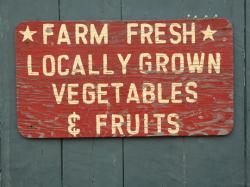Packaged Facts: Sales Of Local Foods Reaches $12 Billion
January 30, 2015 | 3 min to read

ROCKVILLE, Md. — Like organic products before them, locally produced foods are stepping out of the shadow of their once "quirky niche" designation to claim a much more prominent—and permanent—place in the U.S. food and beverage retail-scape. Market research publisher Package Facts estimates that local foods generated $12 billion in sales in 2014, accounting for 2% of total U.S. retail sales of foods and beverages. Looking ahead, Packaged Facts anticipates that over the next five years, local foods will grow faster than the annual pace of total food and beverage sales to approach $20 billion in 2019.
The findings were published in the recently released report, Shopping for Local Foods in the U.S. The report can be obtained by visiting: http://www.packagedfacts.com/Shopping-Local-Foods-8684801/.
"We've reached a tipping point for local foods. Over the past 10 years, there has been a surge in consumer demand for locally produced foods, along with widening availability," says Packaged Facts research director David Sprinkle. "And it's not just farmers' markets or natural food retailers lending credence to this trend. An increasing number of larger grocers are carrying and promoting local products. Even Walmart has been promoting local farmers in its bid to tailor its store selections more toward local communities."
A proprietary Packaged Facts National Consumer Survey conducted in November 2014 among U.S. adults found that 53% of respondents specially seek out locally grown or locally produced foods, with 19% "strongly" agreeing and 34% "somewhat" agreeing. Even more interestingly, almost half the respondents agree they are willing to pay up to 10% more for locally grown or produced foods, and almost one in three said they are willing to pay up to 25% more. A third of consumers also claim to consciously purchase locally grown or locally produced foods at least once a week.
Among the primary reasons for purchasing locally grown or locally produced foods, the majority of consumers claim they do so because the products are fresher. In addition, more than half of consumers say they buy local products to support local businesses, and more than 40% of consumers say the products taste better. In addition, roughly a third believes that local products are healthier, and that they like to know where their food is coming from.
Shopping for Local Foods in the U.S. examines trends and opportunities in the local foods market, covering all types of retail outlets, farmers' markets, foodservice providers, marketers all types of business models, the role of food hubs, reasons to buy local foods, and government support for local foods programs. Utilizing extensive data from a proprietary Packaged Facts National Consumer Survey conducted in November 2014, as well as other published surveys, the report delves deeply into consumer purchasing, examining what motivates consumers to buy local foods, where they're buying them, and what they're buying and growing themselves. For more information on this and other reports in Packaged Facts' industry-leading market research catalog, please visit: http://www.packagedfacts.com/.
About Packaged Facts – Packaged Facts, a division of MarketResearch.com, publishes market intelligence on a wide range of consumer market topics, including consumer demographics and shopper insights, consumer financial products and services, consumer goods and retailing, consumer packaged goods, and pet products and services. Packaged Facts also offers a full range of custom research services.
Please visit Packaged Facts on LinkedIn for more culinary, food packaging, food retailing and foodservice insights. Follow us also on Twitter and Google+.
Source: Packaged Facts
